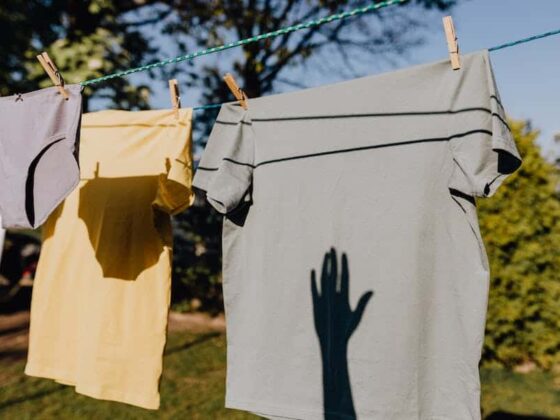Jelly, a delightful and versatile condiment, has been a beloved addition to breakfast tables and culinary creations for generations. While many of us have grown up with the habit of storing jelly in the refrigerator, there is a lingering question: Does jelly really need to be refrigerated? In this article, we will delve into the reasons behind this common practice, when it’s essential to refrigerate jelly, and how to do so effectively. Whether you’re a seasoned cook or just curious about food safety, understanding the storage of jelly can help you make informed choices and preserve the freshness of this beloved spread.
Does Jelly Have To Be Refrigerated?
No, jelly does not have to be refrigerated if it’s unopened and stored in a cool, dark place. The high sugar content acts as a natural preservative. However, once opened, it is advisable to refrigerate the jelly to extend its shelf life and prevent spoilage. Proper storage helps maintain its quality and prevents the growth of mold and bacteria, ensuring a safe and delicious spread for longer periods.
Factors Affecting The Need For Refrigeration
Several factors influence the need for refrigerating jelly:
- Sealing: Unopened jars of jelly typically do not require refrigeration due to their airtight seal, which prevents bacteria and spoilage.
- High Sugar Content: Jelly’s high sugar concentration acts as a natural preservative, inhibiting bacterial growth. This makes it safe for room-temperature storage.
- Fruit Content: Homemade or artisanal jellies with a high fruit content might require refrigeration sooner due to the risk of fermentation.
- Open Container: Once opened, jelly should be refrigerated. Exposure to air and potential contaminants makes it susceptible to spoilage.
- Room Temperature: Hot and humid climates may prompt earlier refrigeration to prevent mold or yeast growth.
- Long-Term Storage: For extended storage, refrigeration is advisable to maintain freshness and flavor.
- Instructions: Always follow the manufacturer’s or recipe guidelines for specific storage instructions. Ultimately, the need for refrigeration depends on factors like storage conditions, seal integrity, and how soon the jelly will be consumed.
How To Properly Refrigerate Jelly?
Properly refrigerating jelly is essential to maintain its freshness and prevent spoilage. Here are steps to ensure that you store jelly correctly in the refrigerator:
Wait For It To Cool: Allow freshly made jelly to cool to room temperature before refrigerating. Hot jelly can create condensation inside the jar, potentially causing spoilage.
Use Airtight Containers: Transfer the jelly to an airtight container, preferably glass or plastic, with a tight-fitting lid. Ensure that the container is clean and dry.
Label And Date: Label the container with the date you made or opened the jelly. This helps you keep track of its freshness.
Fill Containers Properly: Leave some headspace in the container to allow for expansion when the jelly freezes. This is especially important if you plan to freeze it.
Seal Tightly: Close the lid securely to prevent air from entering the container, which can lead to mold growth or a change in texture.
Store In The Refrigerator: Place the sealed container of jelly in the refrigerator. Ensure it’s on a stable and level shelf to prevent spillage.
Keep Away From Odorous Foods: Store the jelly away from strong-smelling foods, as jelly can absorb odors easily.
Avoid Freezing Glass Containers: If you intend to store jelly for an extended period, consider using plastic containers or freezer-safe glass containers, as some glass jars may crack when frozen.
Check For Spoilage: Periodically inspect the jelly for signs of spoilage, such as mold growth, off-putting odors, or changes in color or texture. If any of these occur, discard the jelly. By following these steps, you can ensure that your jelly remains safe to eat and maintains its quality while stored in the refrigerator.
Alternatives To Refrigeration
If you’re looking for alternatives to refrigeration for preserving jelly, here are some options:
Cool, Dark Pantry: Unopened jars of commercially processed jelly can be stored in a cool, dark pantry or cupboard. Ensure the area is dry and the temperature remains relatively consistent, ideally between 50°F to 70°F (10°C to 21°C).
Canning: Properly canned homemade jelly can be stored at room temperature for an extended period. Follow safe canning practices, including sterilizing jars and sealing them effectively to prevent spoilage.
Preserve In A Cool Cellar: If you have a root cellar or cool, dark storage area with controlled humidity, you can store jelly there. A stable environment helps maintain quality.
Freezing: While not an alternative to room temperature storage, you can freeze jelly in airtight containers or freezer-safe bags. This extends its shelf life considerably. Thaw it in the refrigerator when needed.
Vacuum Sealing: Use a vacuum sealer to remove air from the container holding jelly. This helps prolong its shelf life at room temperature, but it’s not a substitute for refrigeration once opened.
Refrigerate After Opening: If you’ve opted for room temperature storage initially, transfer the jelly to the refrigerator after opening to prevent spoilage.
Preservatives: Some recipes may include preservatives like citric acid or pectin, which can extend the shelf life of homemade jelly at room temperature. Follow the recipe and guidelines carefully.
Commercial Jelly Packets: Individual serving-sized jelly packets found in restaurants and hotels are typically shelf-stable due to their sealed packaging. These can be stored at room temperature until opened.
Conclusion
In conclusion, the question of whether jelly needs to be refrigerated hinges on several factors, including its sealing, ingredients, and intended storage duration. While unopened jars can often be stored in a cool, dark pantry, it’s crucial to transfer opened jelly to the refrigerator to ensure its safety and longevity. Properly storing jelly is not only about preserving its flavor but also safeguarding against potential spoilage. By following the guidelines outlined in this article, you can enjoy your favorite spread with confidence, knowing it will stay fresh and delicious.
FAQ’s
Can I Store Opened Jelly At Room Temperature?
No, it’s advisable to refrigerate opened jelly to prevent spoilage. The cold temperature helps extend its shelf life.
How Long Can I Keep Jelly In The Refrigerator?
Typically, opened jelly can be safely stored in the refrigerator for up to 6-12 months, but always check for signs of spoilage.
Can Homemade Jelly Be Kept At Room Temperature?
It’s safer to store homemade jelly in the refrigerator due to the potential for lower sugar content and higher risk of spoilage.
Do I Need To Refrigerate Jelly Packets From Restaurants?
No, commercial jelly packets are often shelf-stable until opened and can be stored at room temperature.
Can I Reseal Jelly Jars For Room Temperature Storage Once Opened?
It’s not recommended to reseal jelly jars for room-temperature storage. Once opened, refrigeration is the best practice to maintain freshness and safety.









